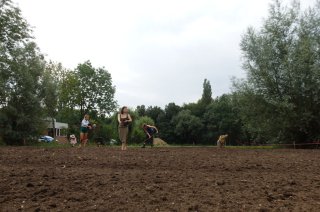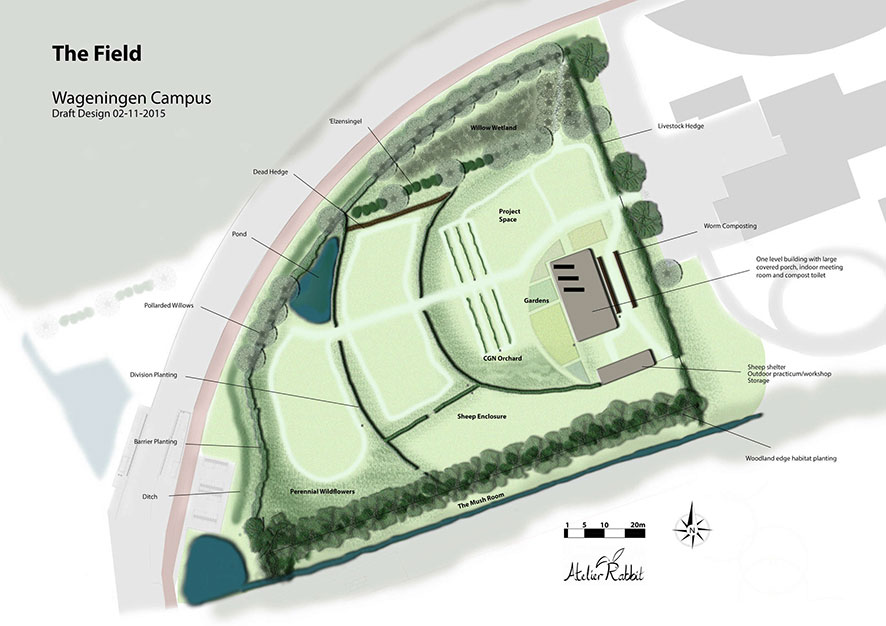
Landscape design
The spatial design of The Field was on the drawing-board until mid-November 2015 after which the first infrastructure started to be added. The designer was Fiona Morris of Atelier Rabbit, who also redesigned the part where the small pond is after the orchard was planted in spring 2017.
The designing process followed an ecological method and aimed to support a multifunctional use of the space, with formal recommendations for additional phases of design in the future. The primary function of the space will be to create a framework for temporary ground-bound projects connected to education or research activities and partner organisations of Wageningen Campus. As part of the Apple-tree time-line the site will accommodate an apple-tree collection from the CGN (Centre for Genetic resources, the Netherlands), helping safeguard the gene-pool and providing a small demonstration area for modern organic orchard management.
The site of The Field has many qualities, which the design aims to strengthen. As the first or the last area experienced by many cyclists and bus-passengers The Field should be an attractive 'entrance' to the campus. It has remnant trees with cultural-historic relevance to the agricultural heritage of the area, and is a potentially important wildlife corridor linking the Blauwe Bergen park to its south and the Dassenbos woodland to its north.

Due to compaction caused by the building of the new bus route and an addition of a deep surface layer of soil, there is no longer any existing flora and fauna so the first need has been to consider soil rehabilitation and bring some life back to the site. To accelerate this, instead of merely sowing the offered grass as compensation planting the designer approached Cruydt Hoeck, a mix of their native wildflower and plant mixes has been sown by Unifarm and volunteers at a public seeding event during the 2015 summer break. The chosen plants provided the first healing skin on the land over winter, improved the disturbed soil for the benefit of future 'growing' projects, aided soil hydrology function, speeded the return of wildlife, and brought some colour to the area in 2016.
